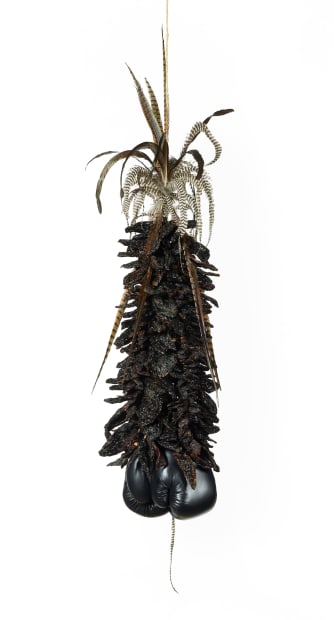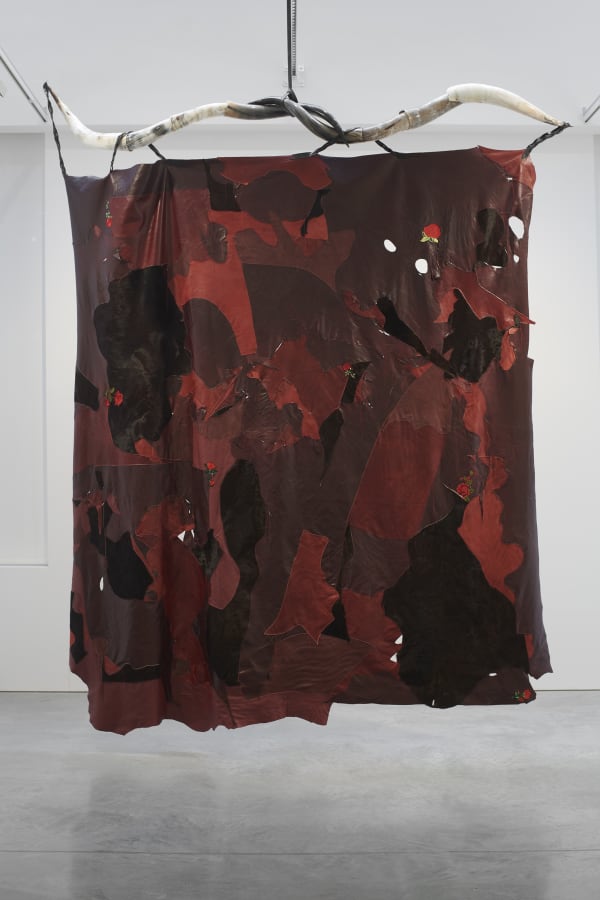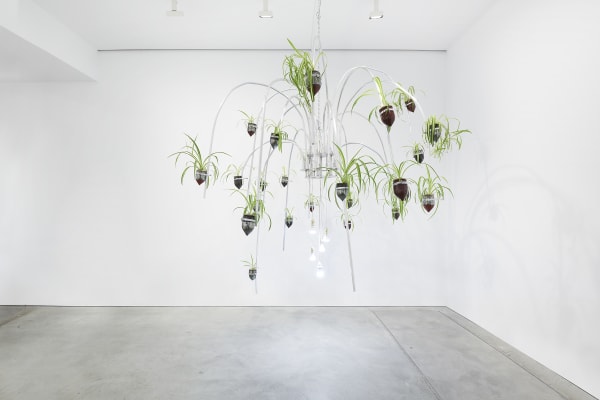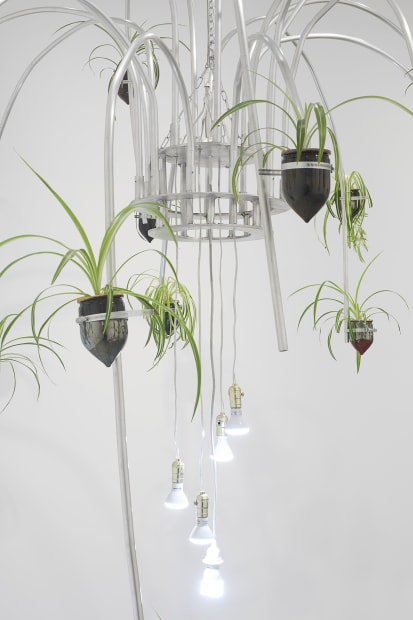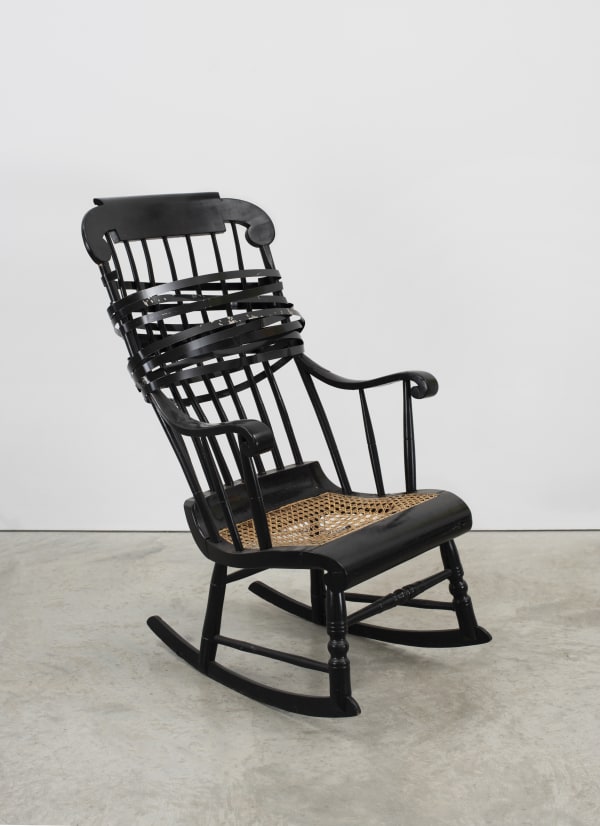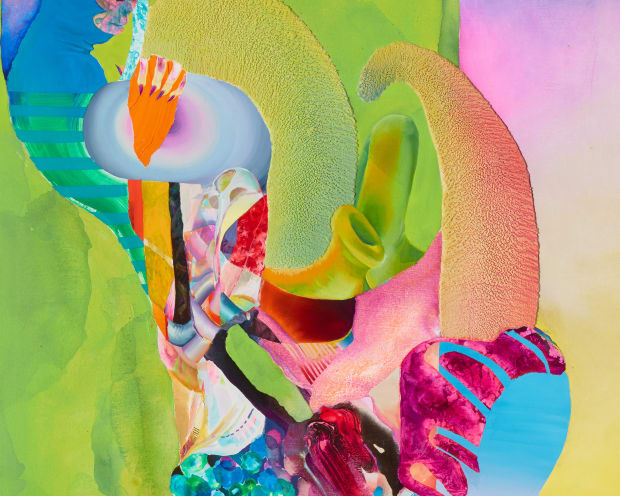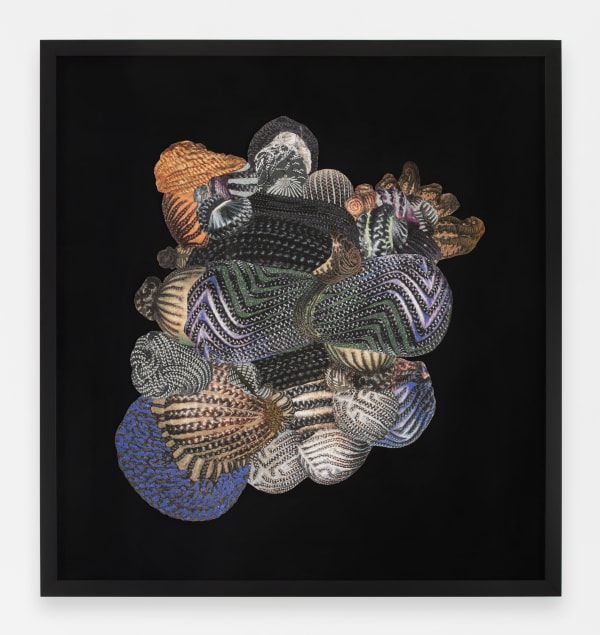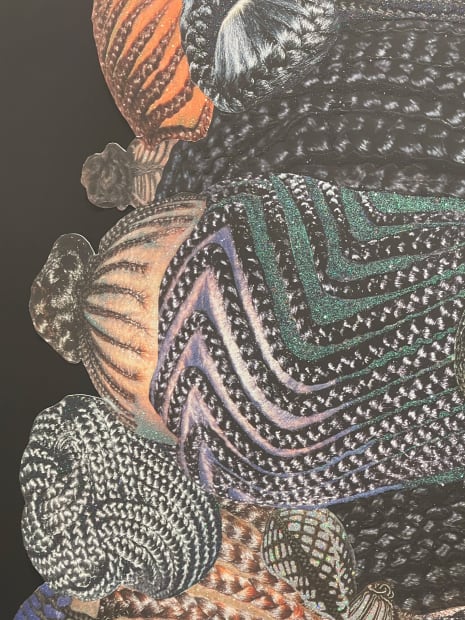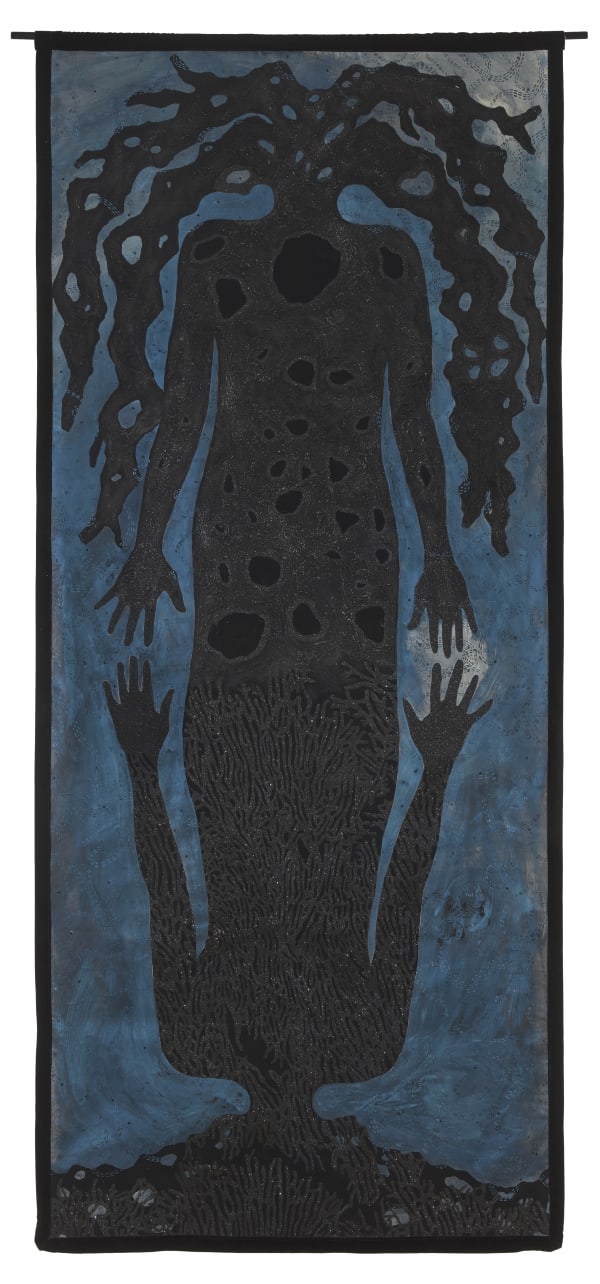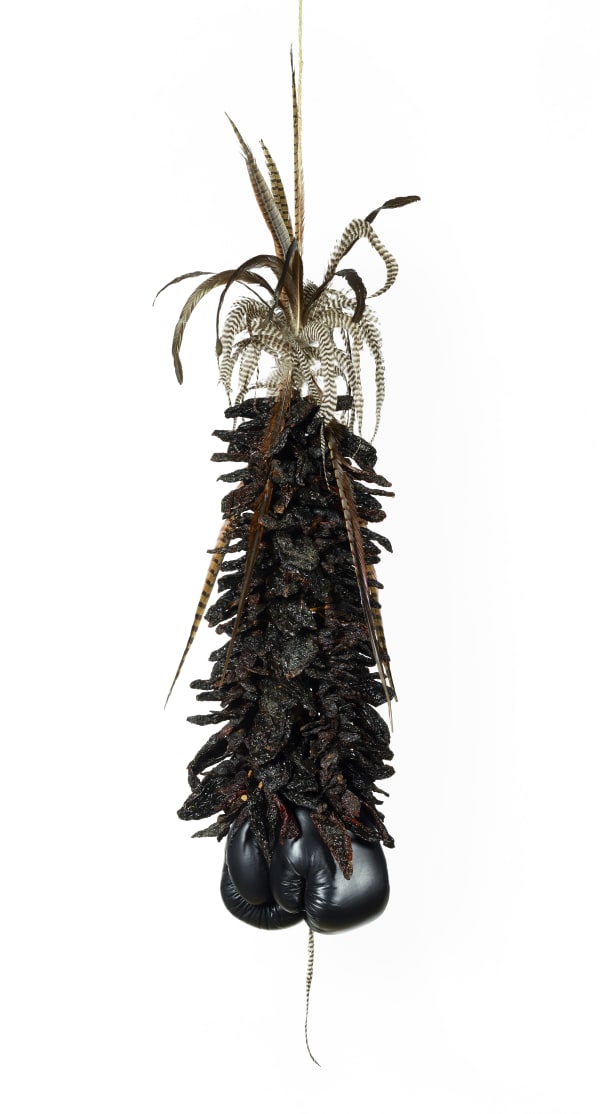-
Allana Clarke
Alisa Sikelianos-Carter
Daniel T. Gaitor-Lomack
Esteban Ramón Pérez
Jeffrey Meris
Ilana Savdie
Vincent Valdez
Un/Common Proximity refers to the artists’ unprecedented experience of living and working in close proximity with one another during a year punctuated by a landmark U.S. election, global pandemic, and national reckoning of systemic racial injustice. This exhibition highlights both individual discoveries as well as communal responses tackling themes of protection, healing, redemption, and intuitive processing that permeated throughout the studio walls.
The exhibition is curated by 2020-2021 NXTHVN Curatorial Fellow, Claire Kim.
-
-
With grace, humor, and a little help from the camaraderie of our makeshift quarantine pod, these artists’ works share personal and communal experiences that offer a roadmap to finding healing and protective guidance to navigate a rapidly changed and changing world.
- Claire Kim, NXTHVN 2020-2021 Curatorial Fellow¹
-
-

-
-

ESTEBAN RAMON PEREZ, EL GALLO NEGRO (13 WINS - 0 LOSES), 2021
CLICK FOR DETAILS
-
In Como la Flor, Esteban Ramón Pérez uses a tattoo gun, sans ink, to etch a distorted image of the Mexican coat of arms onto the surface; this method of scratching and puncturing the first layer of leather necessitates two to three rounds of mark-making to depict the chosen image. The combination of the detailed and delicate treatment of the leather with the undeniably tough and punk method of painting manifests into awe-striking works of powerfully honest representations of identity and dissent.
-
-

-

-
-
Allana Clarke’s practice exposes the power of materiality, as she brings new life to materials that have held personal and/or historical ties to anti-Black sentiment, often related to society’s violent adherence to Western standards of beauty. By repurposing materials such as hair bonding glue and cocoa butter, Clarke rejects such pressures, subverting the narratives of these products to create works that offer a path to transcendence and healing. In both processes, the artist relies on time—waiting for the materials to coagulate before next steps are taken—a condition that coincidentally, or tellingly, embodies the wait and patience needed to attain transcendence.
-
-
 DANIEL T. GAITOR-LOMACK,KING'S BLUE (I'LL BE SEEING YOU), 2020CLICK FOR DETAILS
DANIEL T. GAITOR-LOMACK,KING'S BLUE (I'LL BE SEEING YOU), 2020CLICK FOR DETAILS -
-

-
Savdie’s works pose larger questions about the boundaries between foreign and familiar; how to trace home, history, and heritage as an “inconvenient body”; and how to assert and find redemptive outlets against oppressive structures, authorities, and regimes.
-
-

-
The artist's mixed media paintings and collages offer protective healing by inviting viewers into a hushed other-worldly realm that features environments reminiscent of the ocean floor, outerspace, and swamplands. In her large-scale paintings, these imagined spaces are inhabited by powerful and divine beings donning Black hairstyles. Sikelianos-Carter refers to these figures as “galactic portraits of Black ancestors.”
-
-
Checklist
-
-
 ESTEBAN RAMON PEREZ, Como La Flor (Toreado), 2021
ESTEBAN RAMON PEREZ, Como La Flor (Toreado), 2021 -
 JEFFREY MERIS, Catch A Stick of Fire, 2021
JEFFREY MERIS, Catch A Stick of Fire, 2021 -
 JEFFREY MERIS, Fairy Godmother, 2021
JEFFREY MERIS, Fairy Godmother, 2021 -
 ALLANA CLARKE, Wayward, 2021
ALLANA CLARKE, Wayward, 2021
-
-
-
About NXTHVN
Co-Founded by Titus Kaphar and Jason Price, NXTHVN is a new national arts model that empowers emerging artists and curators through education and access, while also accelerating professional careers in the arts. NXTHVN’s Curatorial and Studio Fellowships are made possible, in part, by support from The Andrew W. Mellon Foundation, Ford Foundation, and the TOY family in memory of Yves (1988–2011).
Read accompanying essay by Claire Kim →
Click here to learn more about NXTHVN →
-
________________________________________________________________________
¹Claire Kim, "NXTHVN: Un/Common Proximity," 2021, essay to accompany the exhibition. All text in the viewing room is extracted from this essay.
NXTHVN 2020-2021 Studio Fellows: Un/Common Proximity
Past viewing_room



